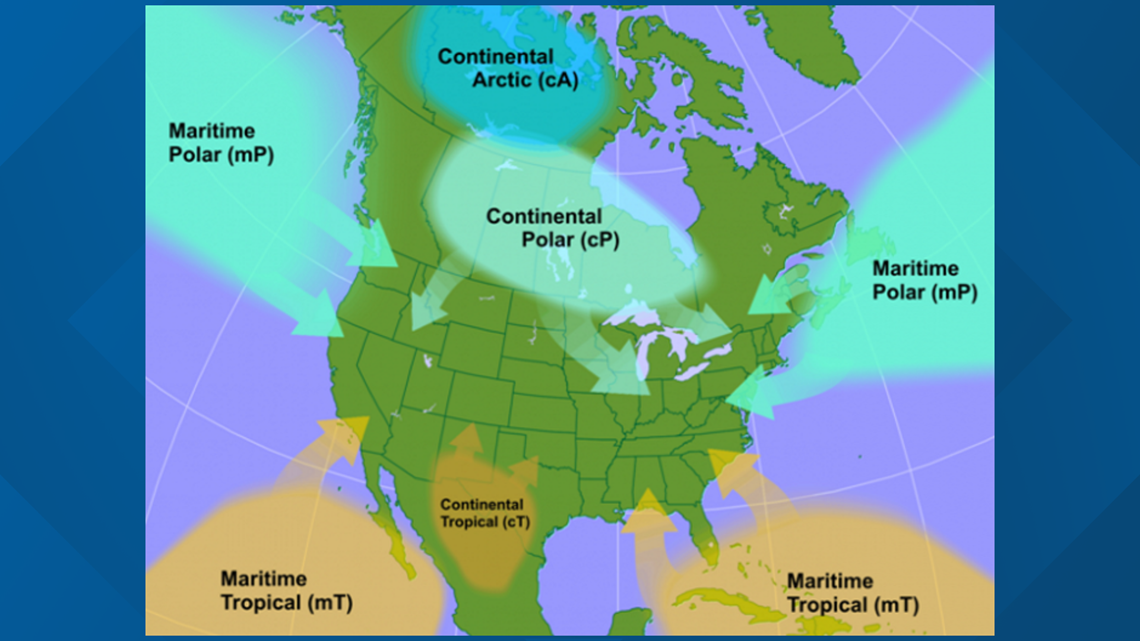SPOKANE, Wash. — Winter in Spokane this season hasn't been terribly cold. With the lowest temperature only been 15 degrees this season, it's been extremely manageable.
And compared to the winter's that I grew up with in Wisconsin... this seems incredibly mild by those standards.
Winter's in Spokane, when compared to other northern U.S. cities, are actually much, much warmer.
The reason for that has to do with different variety of air masses, their origins, and how they're affected by temperatures.
There are 4 varieties of air masses, described by how warm-or-cold, and how humid-or-dry they are. Tropical represents warm, polar is cold. And maritime is humid, continental is dry. the combination of these descriptors gives us our 4 basic air mass types.


The location in which they originate determines their characteristics. For example, the air over the Gulf of medico is maritime tropical and air over northern Canada is continental polar.
So how does this effect winter's in the northern U.S. Well Spokane, and the PNW gets air that originates from the north Pacific which is maritime polar, and the Midwest U.S. gets continental polar. And drier air is more susceptible to temperature changes and extremes than more humid air.
In January in Spokane, the average low temps are mid 20s. But compare that to a city like Bismarck, who's average low temperature is in the single digits!
But we don't always get the more temperate polar air, on occasion, continental polar air can move over the Inland Northwest and that is what's responsible for cold snaps and record lows. In Spokane, record lows are between 30 and 50 degrees colder than the average and can be in the -10s and -20s!
Weather Classroom is produced and broadcasted by KREM Meteorologist Thomas Patrick is you can watch and chat live on his Facebook page Thursdays at 1 p.m. Pacific Time.



